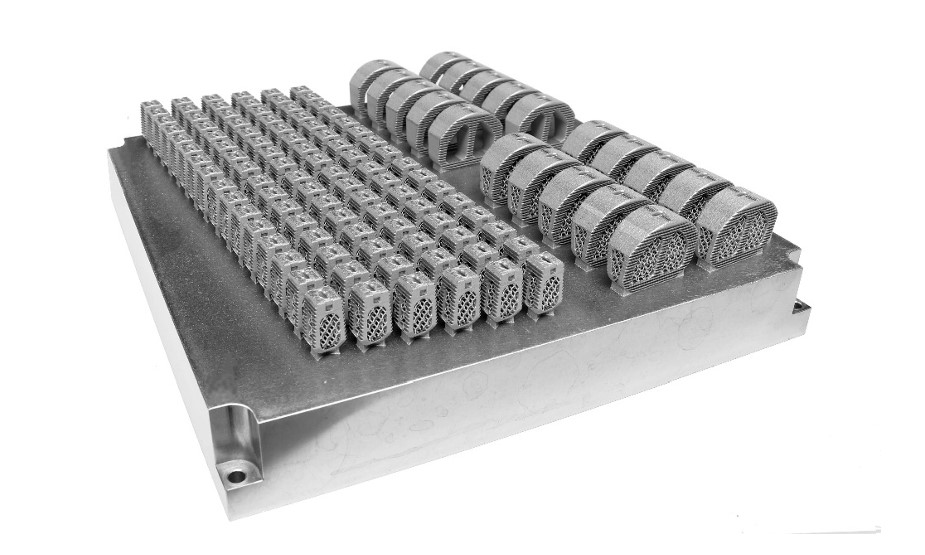By adding process enhancements to its AM contract manufacturing workflow, Amnovis has expanded its potential for patient-specific and standard medical device innovation.
Amnovis is an additive manufacturing production and engineering company based in Aarschot, Belgium. In its AM contract, Amnovis has added process enhancements for manufacturing workflow for titanium implants. This workflow helps produce parts that meet the chemical and medical requirements of the American Society for Testing and Materials (ASTM) standards. This further validates the entire process resulting in increased productivity, both for titanium spinal cages and other medical devices. Ruben Wauthle, CEO and Co-Founder of Amnovis said, “When printing high-end products for quality-critical medical applications, we obtain significantly higher productivity while maintaining superb quality and repeatability.”
“We are happy to share our competitive AM capabilities at NASS 2022 Annual Meeting in Chicago and discuss manufacturing applications for spinal cages and other implants,” said the Amnovis CEO. “For us, innovation benefits from material and process enhancements as well as the ability to increase AM productivity. By scaling our manufacturing capabilities for quality-critical applications, such as medical devices, we ensure faster delivery at lower cost, while maintaining our quality standards.”

Features and process of installing titanium spinal cages
The surgical process begins with the intervertebral disc, which usually occupies this area, being removed. This is followed by interbody cages that are inserted between the bodies of the neighboring vertebrae. Spinal cages can be constructed from metal, plastic, ceramic, or a combination of these materials. Titanium and polyetheretherketone (PEEK) are two frequently utilized materials.
The cages’ empty interiors are filled with a substance that encourages bone formation, such as beta-tricalcium phosphate or your own bone, that may be taken from a patients hip during the same surgery as the fusion. Interbody cages are designed to relieve pain and restore function while also enhancing the stability and balance of the treated spinal segment. Spinal cages treat conditions like degenerative disc disease, spondylolisthesis, spinal tumors or masses, spinal stenosis, and herniated discs.
ASTM Standards regulation
ASTM International is an international standards organization that creates and disseminates consensus technical standards for a variety of materials, goods, systems, and services. There are currently 12,575 ASTM voluntary consensus standards in use worldwide. Headquarters are located about 5 miles (8.0 km) northwest of Philadelphia in West Conshohocken, Pennsylvania.
ASTM International has unveiled a new standard to advise producers of medical devices on the reuse of powder during powder bed fusion (PBF) procedures. The standard was created by the ASTM committee on additive manufacturing technology and is now available as F3456.
Enhancing healthcare and productivity with 3D printing
According to a report by American Health Association (AHA), 3D printing has achieved huge success in enhancing surgical techniques by developing organ models, precision instruments, and bone and joint implants. Ongoing research says that 3D printing would be used in manufacturing organs, medications, and skin tissues.
Rady Children’s Hospital in San Diego, a pioneer in pediatric healthcare in California, has introduced new DICOM (Digital Imaging and Communications in Medicine) standards software, ‘Media2DICOM.’ ‘Media2DICOM’, transforms 3D patient models into the DICOM files frequently used by doctors to share data. The software was developed internally by the hospital’s Helen and Will Webster Foundation 3D Innovations (3DI) Lab. As a result, the program makes it easier for medical professionals to access anatomical 3D reconstructions. This saves time and enables them to better customize treatment to enhance children’s clinical outcomes. More than 280,000 patients, or almost 91% of the area’s children, receive care at this pediatric healthcare leader, which serves as a provider for more than 280,000 kids nationwide.
Nominations for the 3D Printing Industry Awards 2022 have now commenced. Who do you think should make it to the shortlists for this year’s show? Nominate now, the form closes at the end of the month.
To stay up to date with the latest 3D printing news, don’t forget to subscribe to the 3D Printing Industry newsletter or follow us on Twitter, or liking our page on Facebook.
While you’re here, why not subscribe to our Youtube channel? featuring discussion, debriefs, video shorts, and webinar replays.
Are you looking for a job in the additive manufacturing industry? Visit 3D Printing Jobs for a selection of roles in the industry.
Featured image shows Amnovis metal medical implants. Photo via Amnovis



